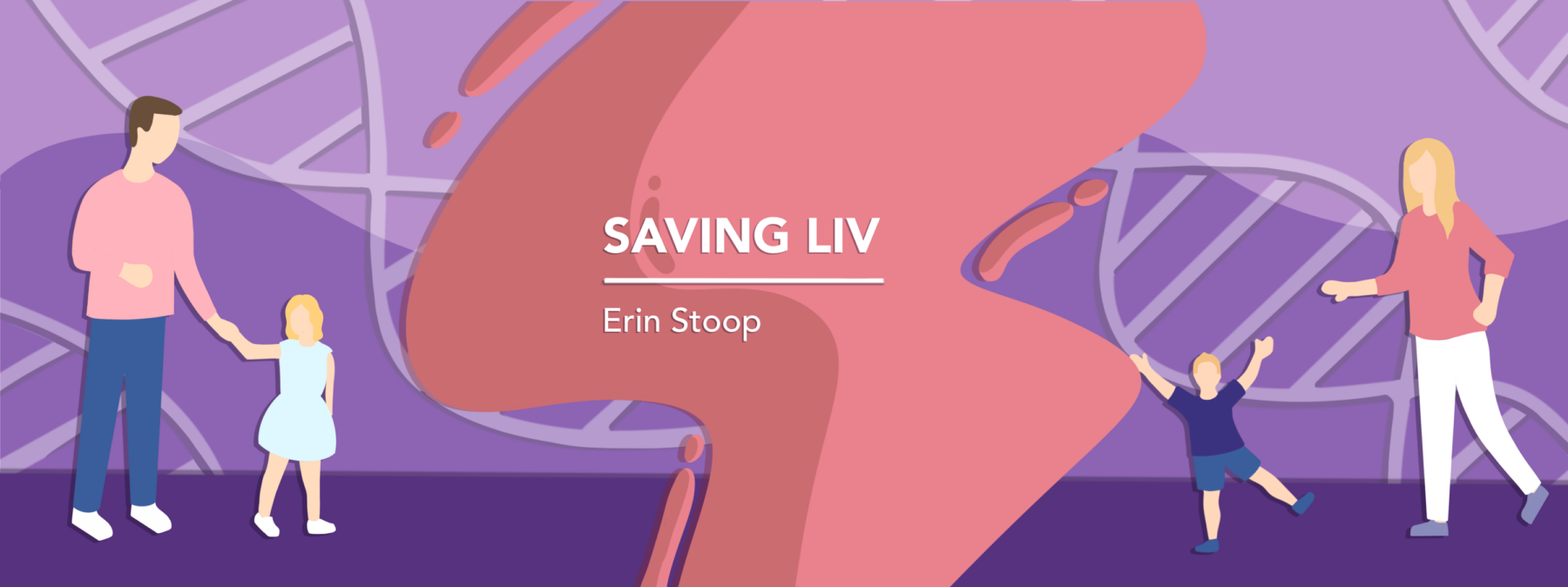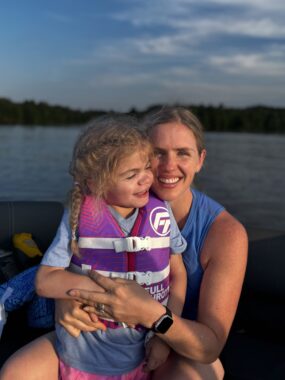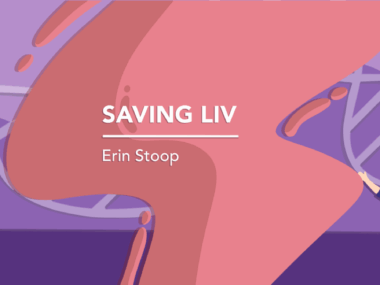I’m finally seeing a therapist, 3 years after my daughter’s diagnosis
After years of procrastinating, an opportunity arose that I couldn't pass up
Written by |

I started seeing a therapist a few weeks ago. It’s something I’ve debated doing since my daughter, Liv, was diagnosed with Sanfilippo syndrome three and a half years ago. Many friends and family members mentioned that it would be a good idea, given the neurodegenerative and terminal nature of this genetic disorder, and I didn’t disagree. But somehow, several years in, I still hadn’t taken that first step of making an appointment.

Liv and Erin Stoop spent time in northern Wisconsin last summer. (Courtesy of Erin Stoop)
For me, it was a battle involving procrastination and wondering whether therapy would be worth it. I’d believe I could find a good therapist who understood this unique kind of grief I’m experiencing, but then procrastinate long enough to convince myself that the therapist wouldn’t actually understand what I’m going through.
Why spend money talking to someone who doesn’t really get it, when I can just reach out to other Sanfilippo moms online? Why take time out of my already hectic day to commit to weekly sessions, when I already know I’ll need to cancel if and when Liv gets sick or my husband travels for work? What if the therapist has never heard of Sanfilippo syndrome or worked with a parent in a similar situation?
About a year ago, I reached out to an old colleague who is a therapist, asking for recommendations in the area. She gave me the names of several clinics, and I quickly Googled them but never called.
A couple months later, I opened up the insurance app on my phone and found the mental health resource section, with links to tons of covered virtual therapy sessions. I looked at reviews for several different therapists but never set anything up. “Do I really need this?” I’d wonder. “I’m doing OK, right?
Then came the perfect opportunity. The Cure Sanfilippo Foundation sent an email to parents about a therapy program the organization is setting up. It’s a virtual group session led by a licensed mental health counselor. This therapist specializes in mind-body medicine and organizational grief processing in the context of end-of-life issues, grief, traumatic stress, and post-critical incidents.
Ding, ding, ding! We had a winner.
An opportunity I couldn’t pass up
The foundation is paying for the therapist, so sessions are free for parents. My husband would rather spend his “therapy” time taking care of the lawn or working on a house project in the basement. But for me, this was an opportunity I couldn’t talk myself out of. The therapist would know about Sanfilippo and understand this level of grief, and I’d be able to hear from other parents who are walking the same path as me.

Liv is ready for school. (Courtesy of Erin Stoop)
The group started a few weeks ago and will meet online for 90 minutes every other week for the next six months. Let me tell you, I am so happy I said yes to these sessions. In our first meeting, the therapist touched on two points that really resonated with me. One was about the loss of our assumptive world, which is the formal term for grieving the life you had envisioned yourself (and your child) living. She also explained how “jealousy” of other families with healthy kids shouldn’t be categorized as jealousy at all, but as another form of grief. Doing so eases the shame that may come from feeling jealous.
I also enjoyed hearing from the other parents, whose kids are all different ages. Some families are new to the diagnosis, and others have been living with it for years. It made me realize how far I’ve come in the last few years.
I know not everyone may have access to such a program, but I am excited to continue these sessions. If you’re debating talking to a therapist about everything life has thrown your way, I hope I’ve persuaded you to take that next step.
Note: Sanfilippo News is strictly a news and information website about the syndrome. It does not provide medical advice, diagnosis, or treatment. This content is not intended to be a substitute for professional medical advice, diagnosis, or treatment. Always seek the advice of your physician or other qualified health provider with any questions you may have regarding a medical condition. Never disregard professional medical advice or delay in seeking it because of something you have read on this website. The opinions expressed in this column are not those of Sanfilippo News or its parent company, Bionews, and are intended to spark discussion about issues pertaining to Sanfilippo syndrome.






Leave a comment
Fill in the required fields to post. Your email address will not be published.